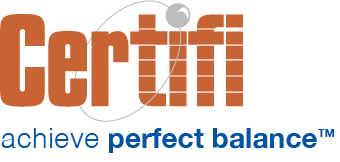The U.S. healthcare system is heavily populated by disparate technology systems and manual interactions between those systems that inhibit patient care and cost containment.
To help alleviate that problem, the Department of Health and Human Services (HHS) Office of the National Coordinator for Health Information Technology (ONC) in July released the Health Data, Technology, and Interoperability: Patient Engagement, Information Sharing and Public Health Interoperability (HTI-2) proposed rule.
Here’s a brief overview of what the proposed rule means for health plans:
Data Standards
Health plans must use newer versions of the United States Core Data for Interoperability (USCDI) for data exchange. The USCDI is a standardized set of data classes and elements those in the healthcare industry use to exchange data. Providers, government health agencies, pharmacies, health plans, health information exchanges, and more use this data to more readily exchange healthcare data.
The ONC’s HTI-2 proposed rule aims to update the data standard to version 4. The rule establishes a Jan. 1, 2028, expiration date for USCDI version 3. Version 3 or version 4 may be used before Jan. 1, 2028, but those wishing to remain certified must update to version 4 by Jan. 1, 2028.
SMART on FHIR
The HL7® FHIR® SMART allows third-party applications to access health data through electronic health records (EHRs). The standard will be updated to a newer version (SMART v2.2).
Health plans may need to update their EHR systems to support this new version. SMART version 1 expires on Jan. 1, 2026, and SMART version 2 expires on Jan. 1, 2028. As a result, developers may continue to use SMART version 1, 2, or the newer version 2.2 through 2025. In 2026 and 2027, they may use version 2 or version 2.2. Beginning in 2028, they must use version 2.2 to maintain certification.
Encryption Requirements
Health plans must comply with stricter data encryption standards to protect patients’ electronic health information (EHI), including encrypting data on user devices and servers.
API Certifications
The proposed rule also seeks to create certifications for several APIs, including a payer-to-payer API, a prior authorization API for payers, and a provider directory API. Though these certifications are voluntary, they are part of ONC’s effort to promote a set of minimum technical requirements that ultimately improve interoperability. Here’s a quick look at each API:
Payer-to-Payer API
The Payer-to-Payer API helps health insurance companies share member information electronically, like when a member changes plans. It can help improve care coordination, improve the patient experience by eliminating repetitive forms, and reduce the administrative burden for doctors and insurers.
The certification includes defined data standards, security standards, data retrieval methods, data sharing protocols, and a timeline for implementation.
Payer Prior Authorization API
The proposed rule sets new standards for electronic health information exchange related to prior authorization for medical services. The prior authorization process is often slow and cumbersome, relying on fax, phone calls, and web portals. New standards would allow providers to request information and submit requests electronically, while payers could respond to authorization requests electronically.
For payers, the rule proposes an API that allows both sending and receiving data, leverages data standards like HL7 Da Vinci FHIR standards, and timelines for implementation.
Provider Directory API
The proposed rule also creates a certification for a provider directory API. This API would allow patients and providers to determine which doctors, hospitals, and pharmacies are covered by a specific health insurance plan.
The API uses the HL7 FHIR Da Vinci Payer Data Exchange Plan Net (PDex Plan Net) standard to ensure consistent data format. It also specifies how health IT systems should publish information about a health plan’s network of providers and pharmacies. This API would support the Centers for Medicare & Medicaid Services (CMS) requirement that health plans provide a public directory of their in-network providers.
ONC’s Proposed HTI-2 Rule: Potential Benefits for Health Plans
The ONC’s proposed HTI-2 rule can address specific pain points for health plans. Implementing some of the items in the proposed rule can:
- Improve care coordination, leading to better patient outcomes and potentially lower costs.
- Increase efficiency through streamlined administrative processes, like faster prior authorizations
- Enhanced ability to manage population health by leveraging public health data insights
Considerations and Next Steps
However, that doesn’t mean implementing items in the proposed rule will be without challenge. Should payers choose to achieve one or more of the API certifications outlined in the proposed rule, implementation costs exist when adapting to new data standards.
The rule is currently in a comment period before finalization.
Certifi’s health insurance premium billing and payment solutions help healthcare payers improve member satisfaction while reducing administrative costs.



